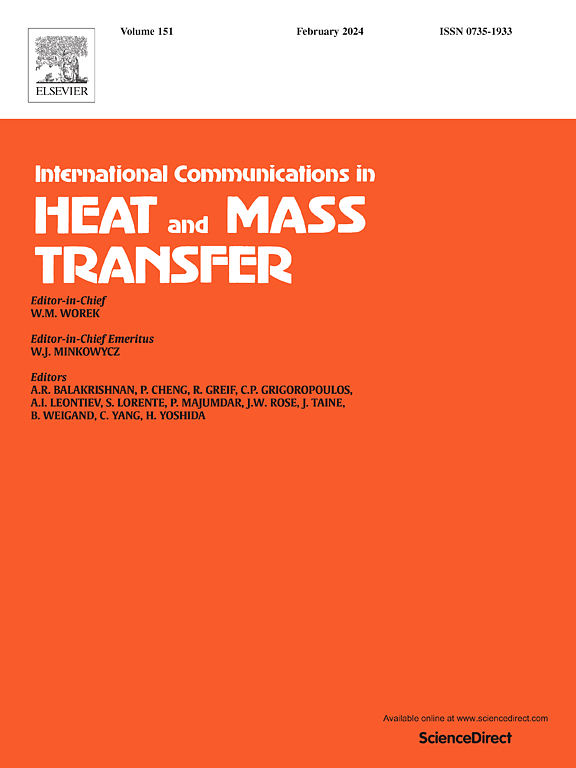Optimization of magnetohydrodynamic flow in a sudden expansion channel: Effects of Hartmann and Reynolds number on pressure and velocity dynamics
IF 6.4
2区 工程技术
Q1 MECHANICS
International Communications in Heat and Mass Transfer
Pub Date : 2025-02-21
DOI:10.1016/j.icheatmasstransfer.2025.108746
引用次数: 0
Abstract
This research investigates the optimization of magnetohydrodynamic (MHD) flow in a sudden expansion channel using response surface methodology. The study focuses on the effects of Hartmann number (Ha) and Reynolds number (Re) on pressure drop and velocity dynamics. The numerical investigation was conducted using a robust 3D MHD solver called ANUPRAVAHA, developed by researchers at IIT Guwahati and IIT Kanpur, across a range of Hartmann numbers (10−100) and Reynolds numbers (100–500), and results were optimized using response surface methodology. Key findings include the development of mathematical models that effectively captures the nonlinear relationships between Hartmann number, Reynolds number and critical flow parameters: pressure drop, maximum velocity, and outlet velocity. Mathematical models were created to predict these flow parameters, showing high accuracy when validated against numerical results. The effectiveness of the model is further validated by prediction errors of less than 1.899 % for all response variables. Response surface methodology (RSM) optimization identified the optimal conditions for balancing pressure drop, maximum velocity, and outlet velocity at Ha = 76.83 and Re = 500, with a desirability score of 0.963. The analysis reveals that while Reynolds number has a stronger impact on pressure drop, Hartmann number's quadratic and cubic terms significantly impact the maximum velocity within the channel. The results also show that increasing Hartmann number leads to a higher pressure drop and nonlinear changes in velocity distribution, whereas higher Reynolds number generally increases maximum and outlet velocities.
求助全文
约1分钟内获得全文
求助全文
来源期刊
CiteScore
11.00
自引率
10.00%
发文量
648
审稿时长
32 days
期刊介绍:
International Communications in Heat and Mass Transfer serves as a world forum for the rapid dissemination of new ideas, new measurement techniques, preliminary findings of ongoing investigations, discussions, and criticisms in the field of heat and mass transfer. Two types of manuscript will be considered for publication: communications (short reports of new work or discussions of work which has already been published) and summaries (abstracts of reports, theses or manuscripts which are too long for publication in full). Together with its companion publication, International Journal of Heat and Mass Transfer, with which it shares the same Board of Editors, this journal is read by research workers and engineers throughout the world.

 求助内容:
求助内容: 应助结果提醒方式:
应助结果提醒方式:


